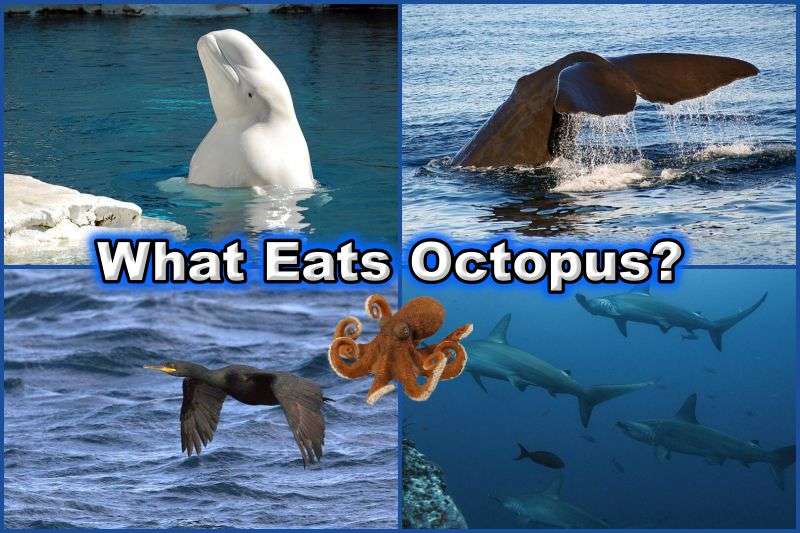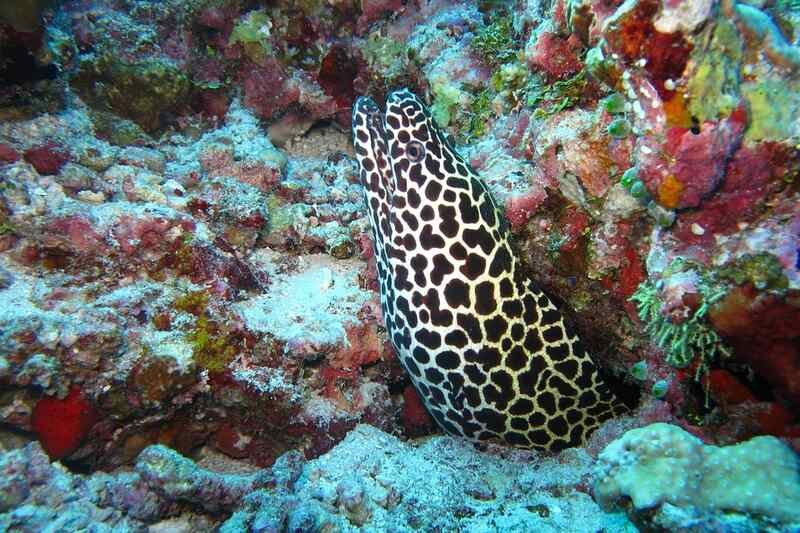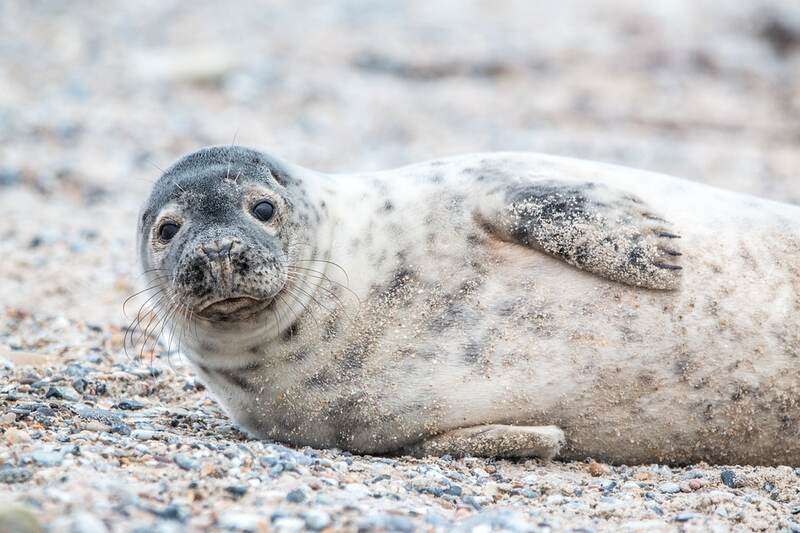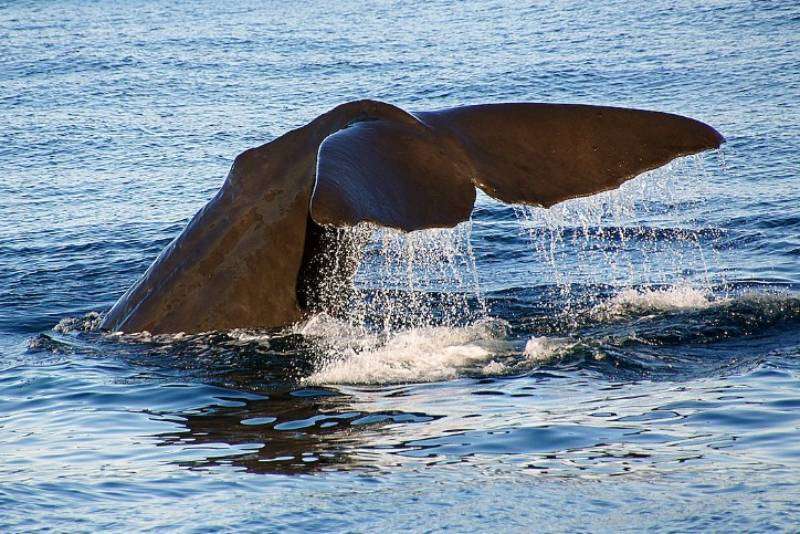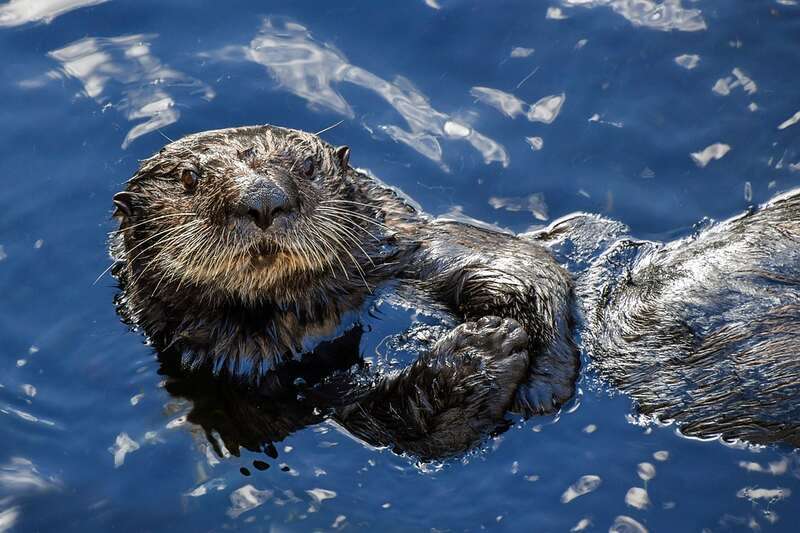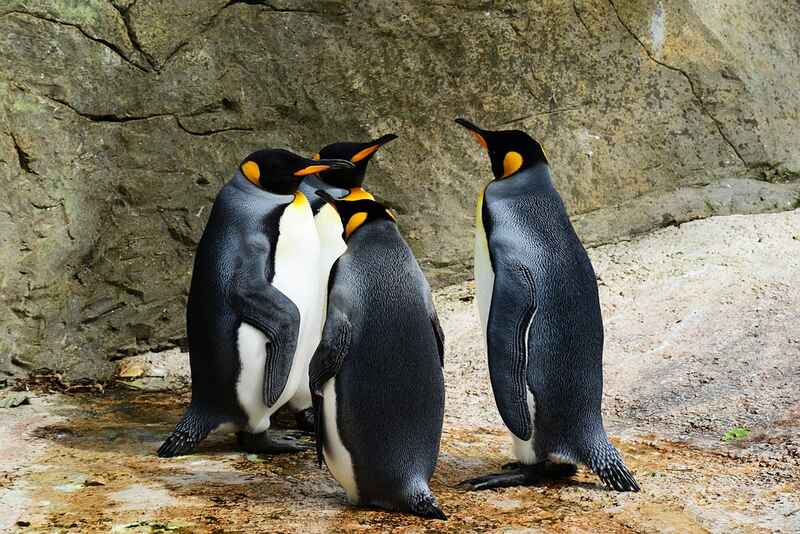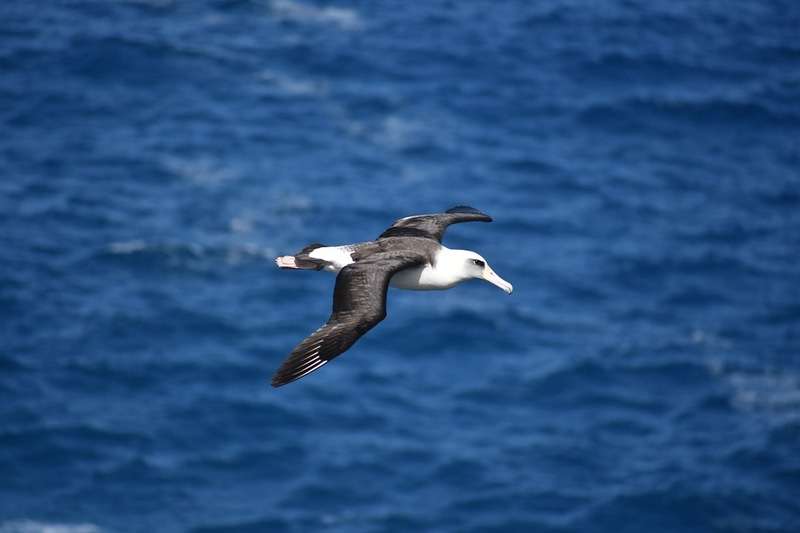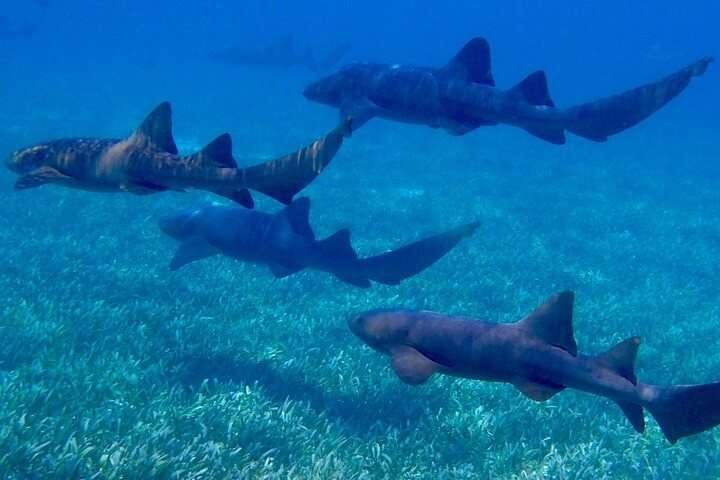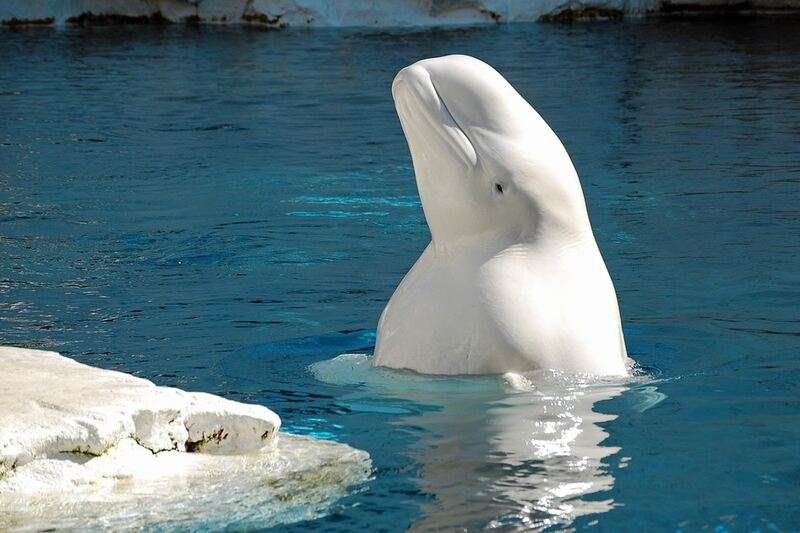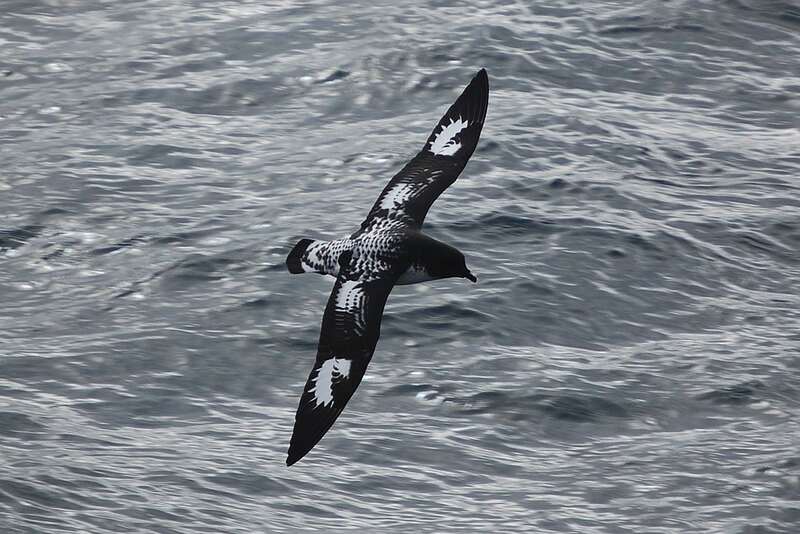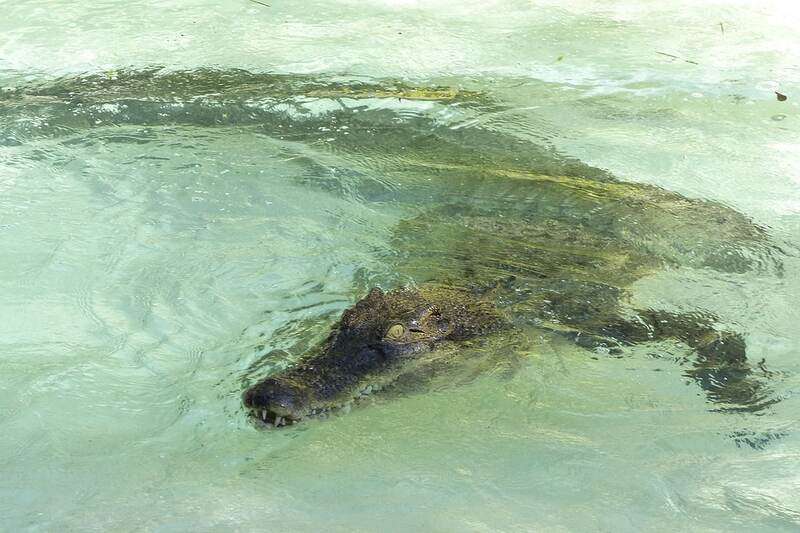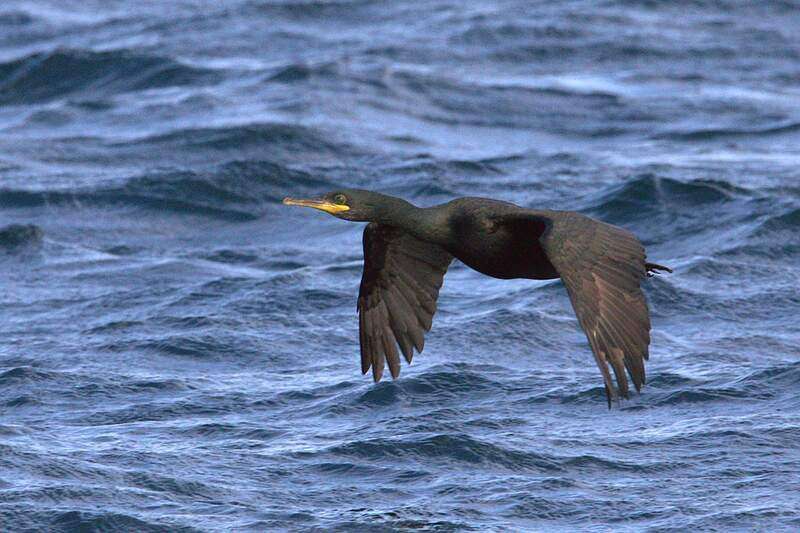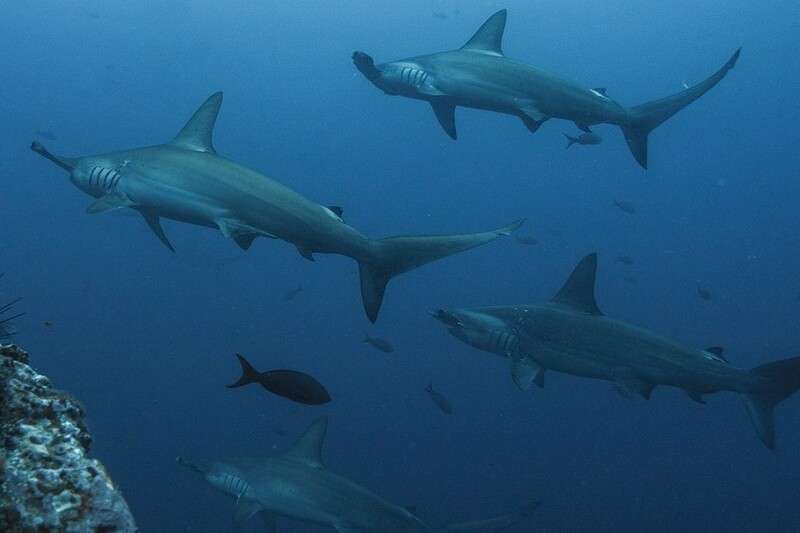Octopuses are mollusks found in the deep sea. These marine invertebrate animals are popular for their eight limbs and are grouped together with squids, cuttlefish, and nautiloids under the class Cephalopoda. Octopuses are benthic creatures and feed on benthic invertebrates like crustaceans and marine worms. While they are renowned predators, they also have some predators of their own. Their predators include seabirds, big fish, whales, and sharks, among others. So, here are 20+ octopus predators worldwide.
What Eats Octopus?
Since octopus is a benthic marine animal, the majority of its predators are also deep sea creatures. But some animals also don’t reside in the sea but still have a food preference that includes octopuses.
These creatures range from reptiles like saltwater crocodiles to seabirds like penguins, petrels, albatrosses, and shags.
As for marine fish, there are sharks like the dogfish shark, nurse shark, hammerhead shark, and oceanic whitetip shark, as well as eels like the Moray eel and the conger eel.
Marine mammals like dolphins, seals, sea lions, sea otters, and whales, including the sperm whale, pygmy sperm whale, beluga whale, and beaked whale, eat octopuses.
Humans, with their seemingly infinite range of dietary, also consume octopus meat. Octopuses sometimes cannibalize within their species too.
20+ Octopus Predators Worldwide
1) Moray Eel
We’ll start this discussion about octopus predators with the Moray Eel. The Moray eel belongs to the family Muraenidae and are deep sea fish.
These fish have worldwide distribution and are primarily marine, but they are also found in both freshwater and brackish water.
Moray eels use their distinct pharyngeal jaws to capture their prey in the mouth and transfer it straight to the stomach.
These eels are carnivores and hunt a lot of marine creatures, including crabs and small fish. Octopuses are significant prey for them.
2) Seal
Seals are semi-aquatic animals, spending most of their time in the water but coming to land to mate and raise children, among other purposes. They are one of the pinnipeds and from the Phocidae or earless seal family.
Seals are carnivores, and since they are marine animals, their primary diet consists of fish. But they also eat animals like octopuses, shrimp, and krill.
Among other seals, the Weddell Seal (Leptonychotes weddellii), natives of Antarctica, particularly, are known to eat octopuses.
3) Sperm Whale
Whales can be divided into two types. One is the baleen whales, like the blue whale, and the other is the toothed whales.
While baleen whales don’t have teeth, toothed whales very evidently do. And among these toothed whales, the Sperm Whale (Physeter macrocephalus) has the biggest size.
Unlike baleen whales, who feed primarily on krill, toothed whales are carnivorous and hunt with their teeth. Due to their vast size, which ranges from 49 – 62 ft, sperm whales also prey on large animals like octopuses, giant squids, rays, and even sharks.
4) Sea Otter
Sea Otter (Enhydra lutris) is another marine mammal that is also one of the octopus predators. These animals are found on the eastern and northern coast of the North Pacific Ocean and are declared an Endangered species by IUCN.
The main diet of sea otters focuses on aquatic invertebrates like mollusks, crabs, sea urchins, and crustaceans.
Sea otters prey on animals of all sizes from at least 100 species. While they hunt small fish like limpets, they also eat big cephalopods like octopuses.
Their energetic lifestyle makes way for high metabolism, which in turn is the cause for them consuming in large amounts.
5) Dolphin
Dolphins might come off as very adorable, but they have their moments as predators. They are octopus predators who eat marine cephalopods. Dolphins are found in all marine, fresh and brackish waters. They are carnivorous and hunt animals for feeding.
The main weapon of dolphins during hunting is their conical teeth. They are efficient enough to dominate large and fast-moving prey like octopuses.
Orca (Orcinus orca), also known as the Killer Whale, is an example of an apex predator, meaning they predate on all animals but don’t have any predator for themselves.
6) Penguin
After the dolphins, we have another cute and adorable animal who eats octopus. Penguins, who belong to the family Spheniscidae, are sea birds that can’t fly.
They are the natives of the Southern Hemisphere, living in a cold and frigid atmosphere. The only exception to this is the Galapagos Penguins, which are found in the Galapagos Islands near the Equator.
As carnivores, penguins primarily feed on fish, krill, and squids, though the preference for food depends on the species. Scientists have found twenty-six different species they prey on, including octopuses.
7) Wandering Albatross
Like penguins, Albatrosses are also sea birds, but their geographical distribution is more widespread than penguins. The Wandering Albatross (Diomedea exulans) particularly follows the same dietary habit as some sea birds.
They mainly feed on cephalopods like octopuses and squid. They also eat small fish and crustaceans that they hunt from the water with their beaks.
Wandering albatrosses mostly fly above colder waters and sometimes overeat. They are fairly small in numbers and currently are one of the Vulnerable species, according to IUCN’s Red Book.
8) Pygmy Sperm Whale
Pygmy Sperm Whales (Kogia breviceps) are another species of toothed whales that eat octopuses.
The whales are much smaller than sperm whales, and their size ranges between 3 — 11 ft. The number of their teeth is between 20 to 32.Like most whales, pygmy sperm whales also use echolocation.
The diet of pygmy sperm whales mainly consists of cephalopods, including glass squid, lycoteuthid and ommastrepid squid. Another animal they eat is the octopus. Pygmy sperm whales also eat bioluminescent animals that are found in midwater.
9) Nurse Shark
Sharks are carnivorous fish that are known for their hunting abilities and the danger they pose to humans. But not all sharks are dangerous to humans.
For example, the Nurse Shark (Ginglymostoma cirratum) is mild-natured and sedentary and doesn’t bite humans unless they are disturbed. IUCN has declared them as a Vulnerable species.
Nurse sharks are slow-moving fish and generally prey on bottom-dwelling animals like stingrays, crustaceans, spiny lobsters, sea urchins, squid, and some bony fish. They also feed on octopuses, snails, crabs, and clams.
10) Beluga Whale
Toothed whales do have the habit of eating octopus, and the Beluga Whale (Delphinapterus leucas) also follows the same dietary habit as its fellow toothed whales.
The beluga whale is a native of the arctic and subarctic oceans and is often called White Whale because of its pure white body color. Another nickname for the beluga whale is the sea canary due to its high-pitched sounds.
Beluga whales are opportunistic feeders and eat a lot of diverse animals depending on their location. In different regions, they consume different animals.
But primarily, their diet contains various fish, including cod, herring, halibut, salmon, flounder, etc. They also consume marine invertebrates like shrimps, octopuses, crabs, squid, etc.
11) Petrel
Petrels are seabirds that belong to the order Procellariiformes. There are a variety of species of petrels, including the Antarctic Petrel (Thalassoica antarctica), Snow Petrel (Pagodroma nivea), and Cape Petrel (Pagodroma nivea). They prefer to stay near open oceans, around coastal waters and islands.
Petrels mostly hunt near the coastal regions and feed on aquatic animals like fish, octopus, squid, shrimps, and krill. Some large petrels, like the Giant Petrels (Macronectes sp.), also feed on carrion and carcasses of seals and other marine mammals.
12) Spiny Dogfish
Spiny Dogfish (Squalus acanthias) is a species of shark belonging to the family Squalidae, also known as the dogfish family. Some of their nicknames include Spur Dog, Mud Shark, and Piked Dogfish.
They were once the most abundantly found species of dogfish, but the hunting by humans has led them to an alarmingly smaller number.
They are currently one of the most vulnerable species globally and Critically Endangered species in the Northeast Atlantic Ocean.
Spiny dogfish are aggressive hunters and feed on a variety of marine animals in large portions. They hunt in groups, ranging across a wide area. Spiny dogfish are bottom-dwellers and feed on aquatic invertebrates like squid, octopus, jellyfish, crabs, sea cucumbers, etc.
13) Juvenile Saltwater Crocodile
Saltwater Crocodiles (Crocodylus porosus) are the largest reptile species and one of the largest animals in the world. They live in water bodies with saltwater and brackish water and spread across a wide area, ranging from Southeast Asia to Australia.
Saltwater crocodiles are hypercarnivorous and apex predators. They are powerful and opportunistic hunters and prey on all kinds of animals, both aquatic and terrestrial.
Though adult saltwater crocodiles do not prefer to eat cephalopods like octopus and squid, juveniles are more partial to such food. Saltwater crocodiles also have the strongest bite in the world.
14) Common Shag
The only kind of birds that are able to prey on octopuses is the seabirds. The Common Shag (Gulosus aristotelis), belonging to the family of cormorants, is one of the known predators of octopus. They mostly depend on aquatic creatures for food.
Common shags are also known as European Shags. They are medium-sized, their body ranging from 27 – 31 inches and their wings spanning up to 37 – 43 inches. The feathers of these birds have a green sheen, leading to their nickname, the Green Cormorant.
15) Conger Eel
Conger Eel (Conger sp.) is one of the large congrid eels found all over the world, especially in the Mediterranean Sea as well as along the coasts of the Atlantic Ocean in Europe and North America.
These eels are quite big, often getting as long as 6 ft or more. Very little is known about them, and 14 species under this genus have been found as of yet.
Conger eels are fierce predators, and their bite is extremely dangerous. They are bottom feeders, and their food primarily is shrimps and crustaceans, but they feed on cephalopods like an octopus as well.
They hunt by smell since their eyesight is quite poor. Conger eels are also very dangerous for humans as they are known to attack and even bite out a chunk of people.
16) Oceanic Whitetip Shark
Among octopus predators, the Oceanic Whitetip Shark (Carcharhinus longimanus) is probably the least in overall numbers and one of the Critically Endangered species.
They are one of the Requiem Sharks who are known to be migratory and viviparous. Oceanic whitetip sharks are famous for being a significant and frequent threat to shipwreck survivors.
These sharks move slowly, but their speed contrasts with their aggressive and fierce nature. They are capable hunters and feed mostly on cephalopods like octopuses and squid, and bony fish. Their diet also includes stingrays, threadfins, sea turtles, gastropods, crustaceans, etc.
17) Beaked Whale
Fairly little is known about the Beaked Whales who belong to the family Ziphiidae because of their reclusive nature, and their preferred region is the deep sea.
They have characteristic beaks at the front of their faces, giving them a dolphin-like appearance and the name of beaked whales.
A particular species of these whales, the Cuvier’s Beaked Whale (Ziphius cavirostris), can dive into 3,300 feet of deep sea and primarily feeds on cephalopods like octopus and squids. They also sometimes eat small fish and crustaceans.
18) Sea Lion
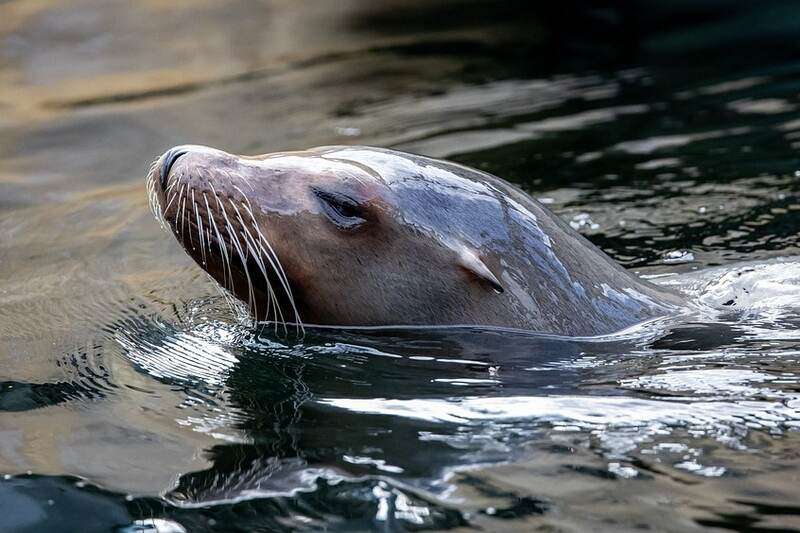
Sea Lions are another predator for octopuses. These marine mammals fall within the Pinniped group along with Seals.
They have external ear flaps, which makes them different from other seals, causing them to fall under Otariidae, the eared seals family. Seal lions are carnivores, and their primary diet includes fish, clams, octopuses, and squids.
Sea lions are generally temperate within their own species, but they are fierce and hostile toward their prey. Even large animals like octopuses aren’t safe from these predators.
19) Hammerhead Shark
We’ve already talked about a few sharks who eat octopuses, and Hammerhead Shark is our latest entry for “animal who eats octopus.” The hammerhead shark belongs to the Sphyrnidae family and gets its name from the rectangular, hammer-like shape of its skull.
The purpose of the “hammer” is to maximize their vision to let them see their prey better and also to pin stingrays to trap them on the seafloor.
Since these sharks are deep-sea dwellers, their prey typically consists of marine animals like fish, crustaceans, squids, and octopuses. They are also very aggressive and use that aggression for hunting potentially dangerous prey like octopuses.
20) Octopus
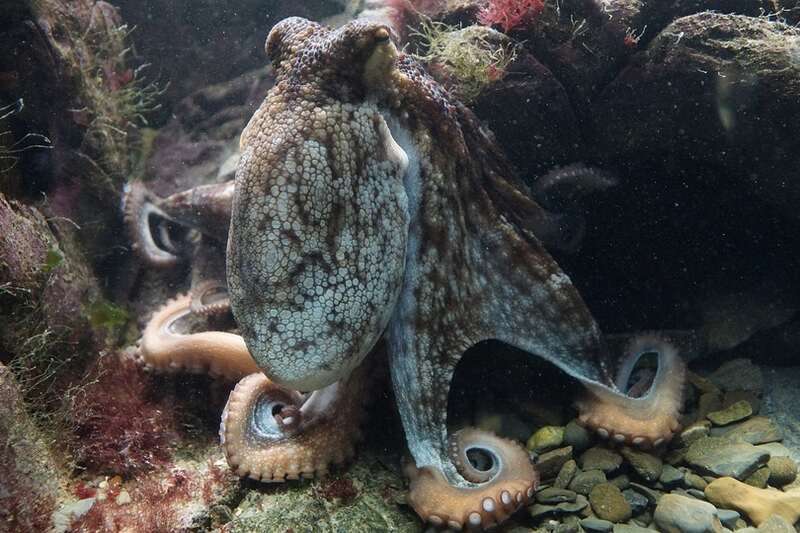
While there are quite a few predators for the eight-legged cephalopods in nature, they are also not wholly safe within their own kind. Octopuses sometimes cannibalize other octopuses, usually the bigger octopus targeting smaller ones.
Unlike many other animals where one particular sex cannibalizes the opposite, octopuses show no discrimination for the sexes.
According to scientists who are working with octopuses, once an octopus subdues and kills the other octopus, it takes its prey to its den and begins eating them by the tip of the limb.
The common octopus (Octopus vulgaris), particularly, demonstrates cannibalism. So, in a way, they are octopus predators as well.
21) Human

Humans are omnivorous in the truest sense. They will try to taste anything put on their plates, and octopuses are not excluded from that. Octopuses can be found as culinary dishes all over the world.
They are more popular and seen as a delicacy in the broad region from the Mediterranean to Asia, including countries like Japan, Mexico, Hawaii, the Caribbean, and some parts of the USA.
In Japan, octopus meat is well-loved and found in many kinds of dishes, including takoyaki, sudako, tako sashimi, sushi, etc. And that is why we must count humans as octopus predators.
These animals are known predators who eat octopus. The ocean is enormous and mysterious, and there can be other animals who like to feed on the eight-legged cephalopod.
But for now, our article ends here. We’d be back with more exciting topics, so you can go check out our website for fun and informative content like this.
References
Dolphin Research Center, Oceana, Animals Cosmos, The Dodo, Quora (Hantani Sadahiko), Bio Explorer, Wikipedia, Phys.org, AZ Animals, Aqua, Animals Network
Also Read:
Anamika has a fascination with all living things. Being a Zoology student, she loves to know new interesting things about animals. She’s also a very keen fan of manga and anime. Writing is her passion, and writing about her favorite things is her boost of serotonin.
